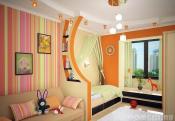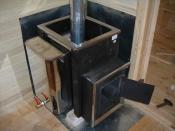Search
Login
Eurofence, what is it, how to build a "eurofence". DIY concrete fence
Are you a happy owner of a suburban area or still have not decided on the choice of fence? Then we can safely say that after reading the materials in this article, you will understand that the European development has recognized its innovation, which has found its niche at construction sites, and will make a choice in its favor. Our confidence is based on the fact that a concrete fence has a lot of advantages, which give the right to consider the euro fence as a fence, ideally suited for any territory. A wide variety of design solutions, high strength characteristics and the ability to install on any soil is not a complete list of the advantages of reinforced concrete structures. What are the rest? Read on.
Content
- What is eurofence? Benefits of Euro Fences video
- The main components of a concrete fence
- How to make a euro fence with your own hands? Sectional element preparation video
- Installation of concrete fence. Which option to prefer? video
What is eurofence? Benefits of Euro Fences
The advantages of concrete eurofences allow them to defeat their competitors in an unequal struggle for primacy, surpassing them in many ways.

Among them is a long service life comparable to the service life of a concrete foundation. Along with this, the time required for the assembly of eurofences is several times shorter than those required for the manufacture of a brick fence. Moreover, this allows us to talk not only about the speed of installation, but also about a relatively short dismantling and replacement of components, which also needs to be mentioned.


Speaking about the advantages of reinforced concrete structures, called Euro-fence, one can not help but mention their disadvantages, which are much smaller.

In fact, the head of this list and is a fundamental disadvantage of the high cost of eurofence, which forces owners of suburban real estate more and more thoroughly to think about making an eurofence on their own.

Before talking about installing the euro fence, you need to understand the terminology. What is eurofence? The fence, called the Euro-fence, is a reinforced concrete structure with high decorative characteristics, which consists of support posts serving as connecting components, and concrete panels or sections.

The main components of a concrete fence
As mentioned above, the concrete surface of the eurofence, which has high decorative and aesthetic characteristics, can imitate various textures, from brickwork and natural stone to a completely chaotic structure.


That is why before you start creating a concrete structure, you need to stock up on forms for eurofences, which you can buy at an affordable cost in a specialized hardware store. If you do not have specific wishes about the aesthetics of the fence, forms for eurofences can be made independently by assembling a wooden or metal box of a rectangular shape.

In addition to sectional elements, support pillars, which can also be made at home, will be required for the manufacture of the euro fence, but experts advise to give preference to factory support products.

How to make a euro fence with your own hands? Sectional element preparation
In order to produce high-quality sectional elements for a reinforced concrete structure, it is necessary to strictly follow the sequence of actions described below. Before installing the fence, it is necessary to carry out a number of preparatory measures, the essence of which is to install the mold for the manufacture of the euro fence on an evenly located solid surface, which is usually used as a wooden shield or a simple wooden door.
To carry out the next stage of work, you will need a metal wire (reinforcement can be used) with a diameter of 4 to 6 mm, which is laid out with a grid and welded so that a grid with a step of 10 x 10 cm is obtained.The resulting reinforcing frame is also necessary for the manufacture of a reinforced concrete structure.

The next step is to prepare the working composition, which will be used for the direct formation of concrete sections. For the manufacture of the working mixture you will need a concrete mixer, which can also be made independently. It will be required to mix the ingredients of the working composition: three parts of sand, two gravel, one cement and a plasticizer.

As for the regulation of consistency, it is carried out by adding the necessary amount of water. When the solution of the desired consistency is ready, it is poured into a previously installed form. To make the surface of the concrete section smoother, experts advise lubricating the mold walls with a mixture of diesel fuel and used oil. In addition, this procedure facilitates easier removal of the finished product after solidification.


It is worth noting that the factory production of the eurofence implies a vibration pressing procedure, which is used to densify the structure and give strength to the finished product. Of course, it is not possible to organize this event at home, however, in order not to violate the technology of manufacturing the eurofence, it is advisable to replace this procedure with a mechanical seal using hammer blows that are placed on a wooden board that serves as a support. Thanks to the described mechanical pressure, the effect of filling the entire form with a working composition is achieved, the adjustment of which is carried out using a spatula and a trowel.

Having completed the above activities, the form for eurofence, completed by the working staff, is left to dry completely. The time required for final solidification varies depending on climatic conditions, season and ambient temperature and generally ranges from 12 to 48 hours. After waiting for the time period necessary for drying, the finished product is removed from the mold by completely turning it over. The hardened element is laid out on a wooden base for subsequent drying.

In a similar way, support pillars for eurofence are cast, however, it is advisable to use reinforcement with a section of 6-8 mm, which is welded by spot welding in the form of a ladder, which for each column requires two pieces. The weight of the finished column varies from 50 to 120 kg, the weight of the sectional panel is 40-90 kg. For the installation and connection of finished parts does not require specialized equipment, and this procedure can be carried out both independently and with the help of a team of specialists.

Installation of eurofence. Which option to prefer?
Installing the eurofence, you can go in two ways. The essence of the first installation method is the initial installation of support columns with a step of 2 m (it is necessary to approach the measurement of the distance with due care), their subsequent fixation and concreting. After installing the posts, the precast panels are inserted into the grooves between the posts. After carrying out the work, there is no need for plastering measures, the joints between the panels and poles are sealed with putty for outdoor work.

You can do otherwise and first install one pillar into the slots of which prefabricated panels are inserted. From the opposite edge of the panel, they dig a hole for the next column, which, with a slight slope, is put on the panel with a groove and deepened into the hole. Experts advise installing brick supports under the bottom plate, which eliminates the warp and recess of the panel.

After installing the span, the bricks should be removed and used during the installation of the next plate. Fill and fixation of reinforced concrete pillars is recommended to be carried out after installing several sectional units.
After completing installation work, it is recommended that the entire surface of the reinforced concrete structure be treated with a primer, which is characterized by deep penetration, which will protect the fence from the effects of natural aggressors.

To increase the aesthetics of the fence, you can use facade paint, which will also protect the fence from atmospheric influences and give it a decorative appearance.







